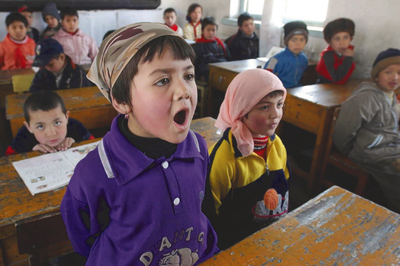|
China has also joined international conventions including the International Convention on the Elimination of All Forms of Racial Discrimination, the International Convention on the Suppression and Punishment of the Crime of Apartheid, and the Convention on the Prevention and Punishment of the Crime of Genocide, and has conscientiously performed the duties prescribed in these conventions and made unremitting efforts together with the international community to realize ethnic equality and oppose racial segregation and ethnic oppression and discrimination in all countries of the world.

In China, any words or acts aimed at inciting hostility and discrimination against any ethnic group and sabotaging equality and unity among peoples are regarded as violating the law.
Any ethnic minority subjected to discrimination, oppression or insults, has the right to complain to judicial institutions at any level, which are bound by duty to handle the complaint.
In China, ethnic minorities and the Han people participate as equals in the management of affairs of central and local governments at all levels, and the right of ethnic minority groups to take part in the management of state affairs is guaranteed. Elections to the National People’s Congress (NPC)-the highest organ of state power-fully reflect respect for the rights of ethnic minorities.
From the first NPC, held in 1954, to the present day, ethnic minorities have enjoyed over-representation among deputies.
Practicing ethnic regional autonomy in areas where people of ethnic minorities live in compact communities is a major political aim of China and a basic policy of the Chinese Government.
Regional autonomy for ethnic minorities means that under the unified leadership of the state, regional autonomy is practiced in areas where people of ethnic minorities live in concentrated communities; in these areas organs of self-government are established for the exercise of autonomy and for people of ethnic minorities to become masters of their own region and manage the internal affairs themselves.
Help continues
In accordance with the actual conditions in ethnic minority areas, the state has worked out and adopted a series of policies and measures to assist these areas in developing their economies, as well as mobilized and organized the developed areas where Han people live to support them.
The 11th Five-Year Plan for Ethnic Minorities Affairs set out six main targets as well as 11 main tasks and 11 key projects, involving every aspect of the development of minority groups.
In August 2005, the State Council discussed and adopted the development plan (2005-10) for the aid of ethnic minorities with small populations. Substantial measures were announced in the plan, including improving the infrastructure for these ethnic minorities, optimizing their economic structure, promoting science and technology and training more qualified professionals.
The 11th Five-Year Plan for Ethnic Minorities Affairs also addressed a lack of information, which is a big obstacle to the development of remote ethnic minority dominated areas.
According to Lou Qinjian, Vice Minister of Information Industry, by the end of 2005 ethnic minority areas had had 30.84 million fixed phone users, 37.17 million mobile communications subscribers and 5.31 million Internet users, with the popularization rate of fixed telephone and mobile phone users reaching 18 percent and 22 percent respectively. | 